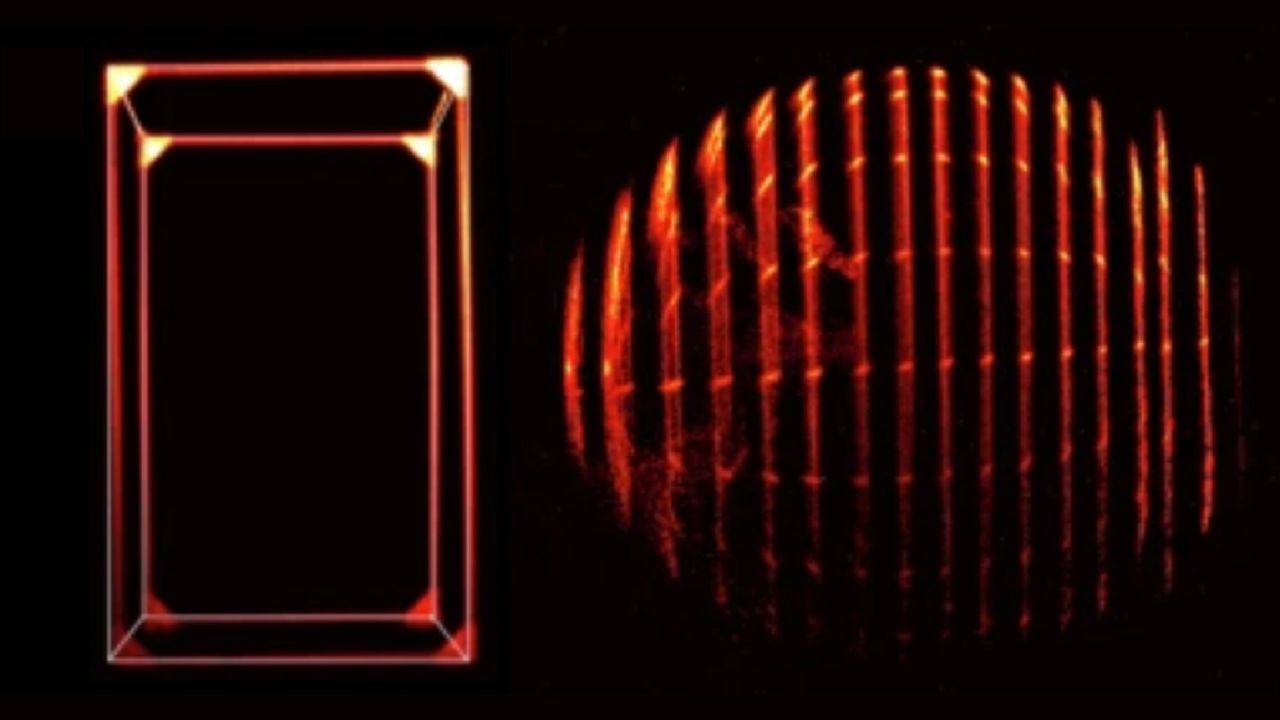
News
October 13, 2025
Physicists capture rare illusion of an object moving at 99.9% the speed of light
For the first time, physicists have simulated what objects moving near the speed of light would look like — an optical illusion called the Terrell-Penrose effect.
**Physicists Simulate Mind-Bending Illusion of Near Light-Speed Travel**
Imagine witnessing a coffee mug hurtling towards you at 99.9% the speed of light. What would you see? Forget the dramatic explosions Hollywood often depicts. Instead, physicists have now simulated a bizarre optical illusion, known as the Terrell-Penrose effect, revealing how our perception of objects warps at such extreme velocities.
For decades, scientists have theorized about the visual distortions that would occur as objects approach the speed of light. The Terrell-Penrose effect, named after physicists James Terrell and Roger Penrose who independently described it in the late 1950s, predicts that objects don't appear to contract in length as Einstein's theory of special relativity might initially suggest. Instead, they appear rotated.
The reason for this counter-intuitive phenomenon lies in the finite speed of light itself. As an object zooms past at near light-speed, the light emitted from its trailing edge takes longer to reach the observer than the light emitted from its leading edge. This difference in arrival times creates a visual distortion, making the object appear rotated in our field of view. Think of it as your eye receiving information from different parts of the object at different times, resulting in a warped perception.
This recent simulation provides the clearest visualization yet of the Terrell-Penrose effect. By meticulously modeling the path of light rays from a rapidly moving object to a stationary observer, the physicists were able to create a realistic depiction of the visual distortion. The result is a mind-bending image where familiar shapes appear skewed and rotated, defying our everyday experience.
While actually observing objects traveling at such speeds is currently beyond our technological capabilities, this simulation provides valuable insight into the bizarre consequences of special relativity. It helps us understand how our perception of reality is fundamentally altered at extreme velocities and offers a fascinating glimpse into the counter-intuitive world of high-energy physics. The research not only confirms theoretical predictions but also provides a powerful educational tool for visualizing complex concepts in physics. It allows students and the public alike to grasp the profound implications of Einstein's theories in a visually engaging way.
Imagine witnessing a coffee mug hurtling towards you at 99.9% the speed of light. What would you see? Forget the dramatic explosions Hollywood often depicts. Instead, physicists have now simulated a bizarre optical illusion, known as the Terrell-Penrose effect, revealing how our perception of objects warps at such extreme velocities.
For decades, scientists have theorized about the visual distortions that would occur as objects approach the speed of light. The Terrell-Penrose effect, named after physicists James Terrell and Roger Penrose who independently described it in the late 1950s, predicts that objects don't appear to contract in length as Einstein's theory of special relativity might initially suggest. Instead, they appear rotated.
The reason for this counter-intuitive phenomenon lies in the finite speed of light itself. As an object zooms past at near light-speed, the light emitted from its trailing edge takes longer to reach the observer than the light emitted from its leading edge. This difference in arrival times creates a visual distortion, making the object appear rotated in our field of view. Think of it as your eye receiving information from different parts of the object at different times, resulting in a warped perception.
This recent simulation provides the clearest visualization yet of the Terrell-Penrose effect. By meticulously modeling the path of light rays from a rapidly moving object to a stationary observer, the physicists were able to create a realistic depiction of the visual distortion. The result is a mind-bending image where familiar shapes appear skewed and rotated, defying our everyday experience.
While actually observing objects traveling at such speeds is currently beyond our technological capabilities, this simulation provides valuable insight into the bizarre consequences of special relativity. It helps us understand how our perception of reality is fundamentally altered at extreme velocities and offers a fascinating glimpse into the counter-intuitive world of high-energy physics. The research not only confirms theoretical predictions but also provides a powerful educational tool for visualizing complex concepts in physics. It allows students and the public alike to grasp the profound implications of Einstein's theories in a visually engaging way.
Category:
Politics